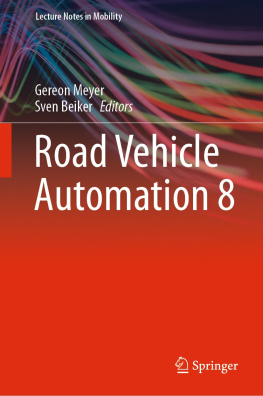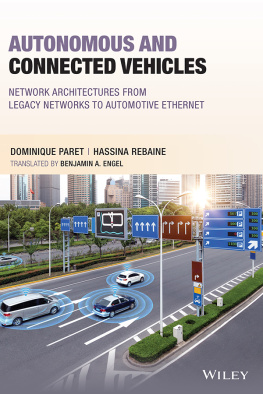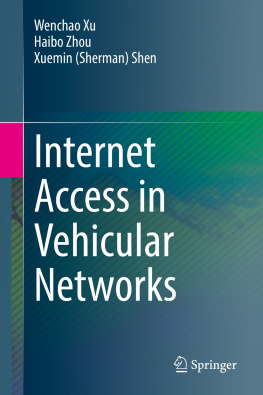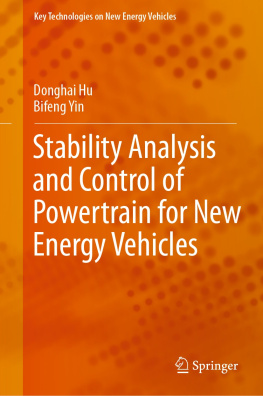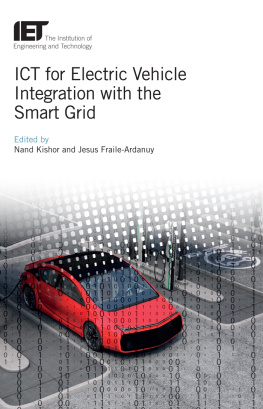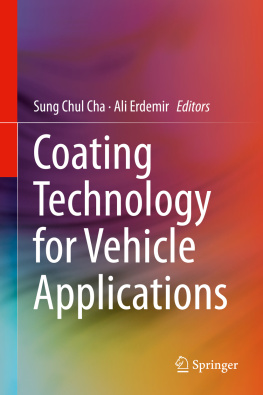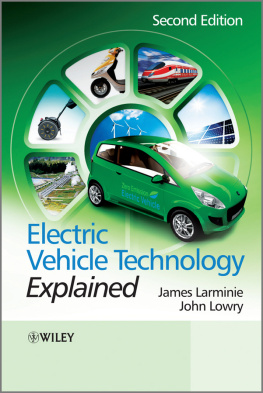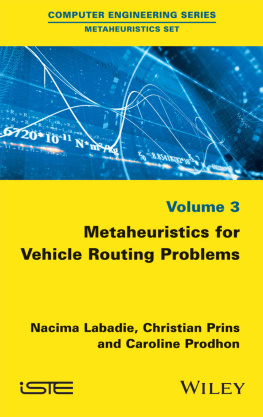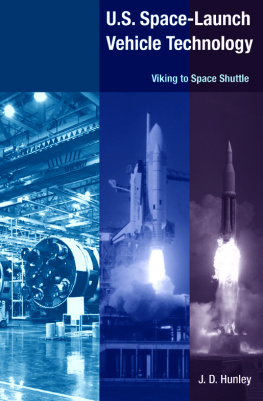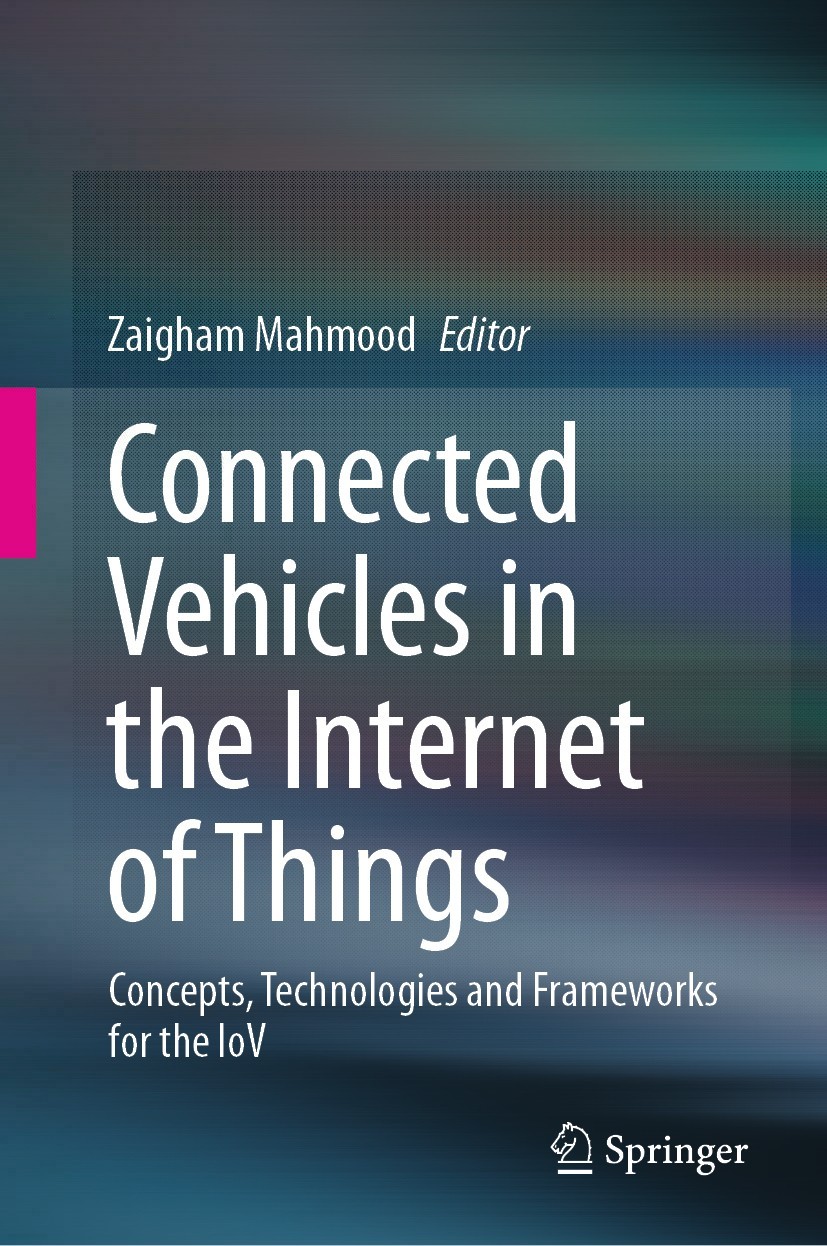Connected Vehicles in the Internet of Things
Concepts, Technologies and Frameworks for the IoV
Editor
Zaigham Mahmood
Debesis Education, Littleover, Derby, UK
Northampton University, Northampton, UK
Shijiazhuang Tiedao University, Hebei, China
ISBN 978-3-030-36166-2 e-ISBN 978-3-030-36167-9
https://doi.org/10.1007/978-3-030-36167-9
Springer Nature Switzerland AG 2020
This work is subject to copyright. All rights are reserved by the Publisher, whether the whole or part of the material is concerned, specifically the rights of translation, reprinting, reuse of illustrations, recitation, broadcasting, reproduction on microfilms or in any other physical way, and transmission or information storage and retrieval, electronic adaptation, computer software, or by similar or dissimilar methodology now known or hereafter developed.
The use of general descriptive names, registered names, trademarks, service marks, etc. in this publication does not imply, even in the absence of a specific statement, that such names are exempt from the relevant protective laws and regulations and therefore free for general use.
The publisher, the authors and the editors are safe to assume that the advice and information in this book are believed to be true and accurate at the date of publication. Neither the publisher nor the authors or the editors give a warranty, expressed or implied, with respect to the material contained herein or for any errors or omissions that may have been made. The publisher remains neutral with regard to jurisdictional claims in published maps and institutional affiliations.
This Springer imprint is published by the registered company Springer Nature Switzerland AG
The registered company address is: Gewerbestrasse 11, 6330 Cham, Switzerland
My 10th and 20th publications were dedicated to my parents. This 30th book is also in memory of my late parents, Ghazi Ghulam Hussain Bahadur and Mukhtar Begum, who spent the prime of their life in fighting for the freedom and independence of their motherland. At a very young age, my father joined a para military organization, as a freedom fighter, with the mission to engage in peaceful struggle to free the country from foreign occupation. Although, the struggle for independence started many decades before and various political parties participated in many diverse ways towards it; there is one event that stands out, that took place on 19 March 1940.
On this day, the organization, that my father belonged to, decided to stage a much more decisive countrywide peaceful protest. The government at the time, fearing the shut-down of the country, had already banned the gatherings but, on this day, supporters and general pubic were out in such huge numbers that the army personnel patrolling the streets received orders to shoot to kill. Live bullets were fired; many thousands were killed or injured and many more taken as political prisoners. That day, my father was leading a group of 313 mentotally unarmedmarching on the streets to oppose the ban on political activities. According to newspaper reports, more than 200 of this group were killed and many dozens injured; majority of the remaining were captured and tried in the courts. There were thirteen freedom fighters who were sentenced to political imprisonment for lifemy father was one of the 13. His organization honoured these brave men with the titles of Ghazi (survivor in the fight between the right and the wrong) and Bahadur (valiant).
This brutality by foreign occupiers and the massacre of unarmed public on 19 March 1940 proved such a turning point in the struggle for independence that only four days later, on 23 March 1940, an all-party confederation passed a unanimous resolution demanding the formation of an independent state. Soon after, a declaration was signed to transfer power to the leading political organisations of the land. The process took another seven years, and eventually the country achieved independence on 14 August 1947. On this day, all freedom fighters were released; my father also returned home ghazi and victorious. My mother, a young girl at the time, was no less courageous in her struggles: she fully supported her husbands mission and raised a young daughter totally independently while my father was away.
Now that the independence was gained and the mission accomplished, my father devoted his time to engage in the study of oriental languages and theology, bringing up his family, and serving the community as a social activist. Achieve excellence be bold side always with the truth make a difference: my parents would constantly remind us.
Looking back now at the life and struggles of my parents, I am proud to say that they were certainly most excellent and bold to side with the truth; and undoubtedly made a huge difference for the entire nation to remember. They are my heroes and inspiration in my life.
Zaigham Mahmood
October 2019
Preface
Overview
The Internet of Things (IoT) paradigm and device connectivity protocols are rapidly developing into a vision of pervasive and distributed computing, wheresmartobjects connect to each other in a seamless manner, to establish a unified physical-virtual world. The interconnection between processor embedded objects, whether a household appliance, a vehicle on the road or a body wearable, is helping to build smart environments such as intelligent cities, automated factories and intelligent transportation systems. According to research by Gartner, connected devices across the globe, and across all technologies, will reach at least 20 billion in number, by 2020. In this context, connected vehicles are another welcome addition to the applications portfolio of the IoT.
A connected vehicle is one that is equipped with Internet access and wireless local area network that allow communication with other smart devices, whether inside the vehicle or outside in the environment. There are a number of ways that vehicles may be connected to each other and with the environment as well as people such as drivers and those on the roads. These include: vehicle-to-vehicle, vehicle-to-infrastructure, vehicle-to-pedestrian, vehicle-to-cloud and generally as vehicle-to-everything. Various other terms relevant to the connected vehicles vision include: (1) Internet of Vehicles (IoV) that refers to convergence of the mobile Internet and the IoT; (2) Mobile Ad Hoc Networks (MANET) that are a type of ad hoc network that allow network nodes to change locations and configurations on the fly; and (3) Vehicular Ad Hoc Networks (VANET) that are a type of MANET, referring specifically to the connectivity of vehicles and created by applying the principles of MANET.
There is clear evidence that technological innovation in the field of connectivity and pervasive computing in the automotive industry is accelerating rapidly. With this progress, Advanced Driving Assistance Systems (ADAS) and Intelligent Transportation Systems (ITS) are also coming on board at a much faster pace. However, like any other technology, we are also witnessing numerous challenges and cyber-related concerns; relating to reliability, safety, security, privacy, mobility, device communication and autonomous self-drive nature of new breed of vehicles. Nevertheless, since the IoV, VANET and MANET present an attractive way forward, mainly due to the huge social, industrial and economic benefits that they offer, issues and related challenges are being researched, addressed and resolved.



